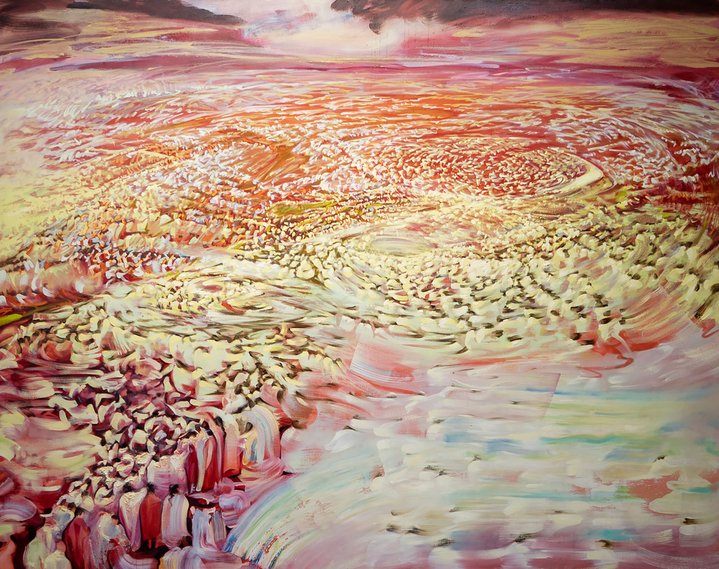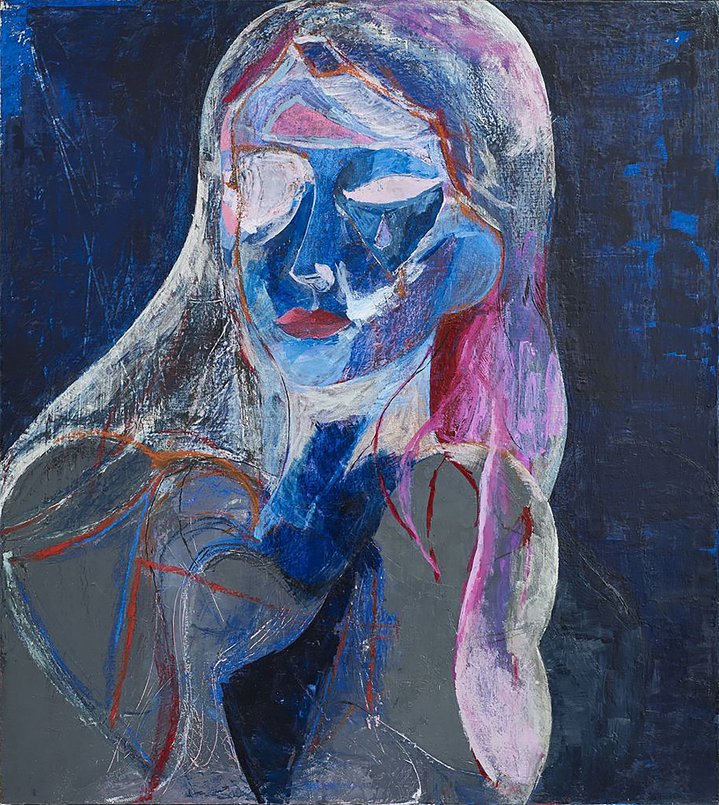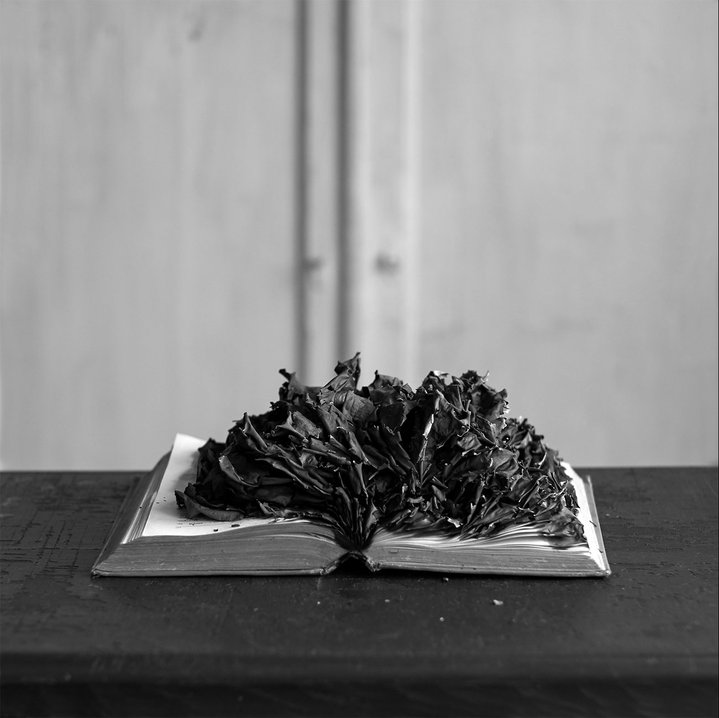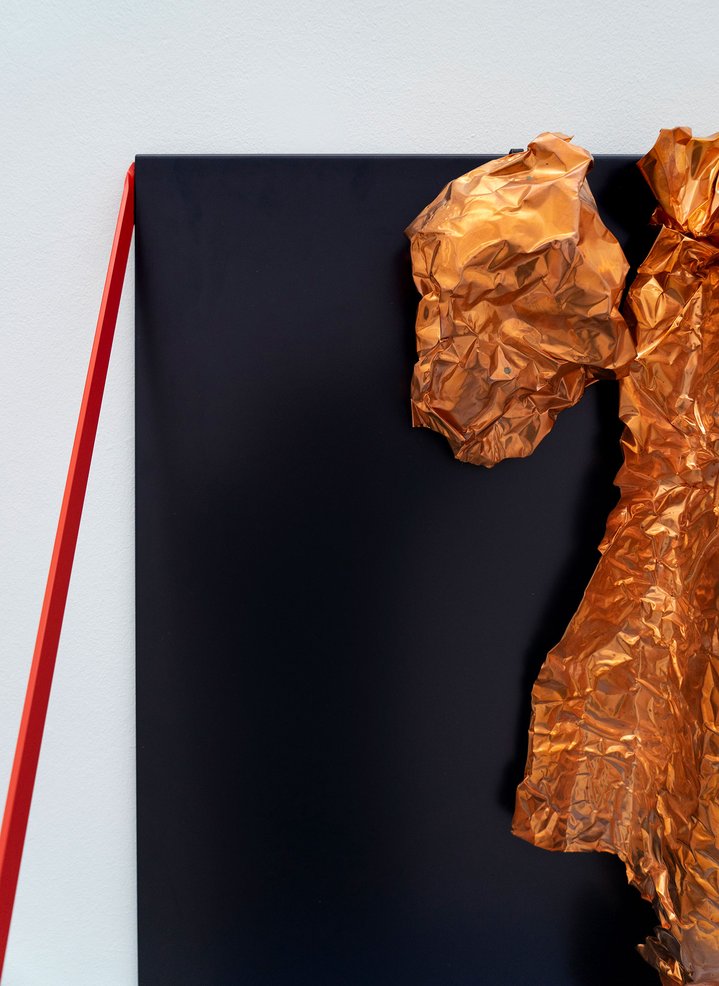Andro Wekua. All is Fair in Dreams and War, 2018. Single channel projection, colour, stereo 5:05 min. Courtesy Sprüth Magers gallery
The Tbilisi art world is buzzing while Georgian artists and art professionals, based both at home and abroad, look at building a national identity within today’s globalized international art world.
On a recent Friday evening in Tbilisi, at the Georgian National Gallery, an art event was in full swing. Hundreds of visitors crowded into the tree-lined terrace, but not for the cheesy khachapuri bread or wine for which Georgia is famous. Instead, they were curious onlookers as 30-year-old artist Levan Songulashvili (b. 1991) opened his multimedia solo exhibition. Titled ‘Triptychos’, the show brought together a painting of human figures swirling in a vortex of pinks, reds and whites, with an installation of a dizzying birch-tree forest — an exploration of a recent personal encounter with imminent death, he explained. Our conversation that evening was frequently interrupted by visitors congratulating Songulashvili and asking to take selfies with him. One fan was a young girl, who bashfully approached him for a photograph. Her parents had brought her to the exhibition to celebrate her tenth birthday.
Events like this are gaining traction in Tbilisi. As travel bans lift, the shutters on art institutions are re-opening and providing artists with platforms to exhibit and cultivate recognition in their home country. Songulashvili, who graduated from the Tbilisi State Academy of Arts and has an MFA from the New York Academy of Art, now divides his time between studios in both places. He was recently shortlisted to represent Georgia at the 2022 Venice Biennale and exemplifies a young generation of artists who no longer aspire to leave Georgia for careers abroad. Instead, they are finding reasons to return or stay.
While Georgia has for centuries been fertile ground for poets, writers, artists, operating at the crossroads of the Iranian, Russian and Turkish empires, what is new today is a plethora of private-sector exhibition opportunities, art residencies, fellowships and the ability to travel abroad—physically, as well as virtually. Practitioners like Koka Ramishvili (b. 1956), Andro Wekua (b. 1977), Thea Djordjadze (b. 1972) and Andro Eradze (b. 1993) are by now recognised names at global art fairs and contemporary art exhibitions. Residencies, such as AqTushetii (in the mountainous Tusheti region) and Art Villa Garikula (founded in 2002 by Karaman Kutateladze, the grandson of Russian Cubo-Futurist artist Kirill Zdanevich), host artists and organize exhibitions.
There is a growing network of grassroots, private-sector galleries. ‘Project ArtBeat’ has shown emerging and mid-career Georgian artists since 2014 and began as a roving project space in a shipping container. ‘Window Project’, launched in 2013 and now run by Tamuna Arshba and Tamuna Gvaberidze, exhibits modern and contemporary Georgian artists at home and abroad, while also bringing notable international artists, such as Sigmar Polke and Aleksey Dubinsky, to Tbilisi. Both galleries are regular participants in art fairs like Art Dubai, Art Cologne, and NADA Miami. Indeed, the importance of the private sector in the promotion of contemporary art in Georgia cannot be underestimated; Songulashvili’s exhibition, for example, took place in the National Gallery, but its financial and curatorial backing came almost entirely from ‘Window Project’. The Tbilisi Art Fair, founded by visionary strategist and businessman Kaha Gvelesiani, has its third edition planned for May 2022. Ventures such as these, which draw international visitors, reveal a cosmopolitanism particular to Georgia and the Caucasus, which is transforming the dense region’s history of socialism, religious conflict, polarizing national politics, and cultural idiosyncrasies from a potentially destructive combination into an alchemical one.
Irena Popiashvili, Dean of the Visual Art, Architecture & Design School at the Free University of Georgia, says that a key part of her job is revealing to students that they can live in Tbilisi and still have international art careers. “The terms ‘periphery’ and ‘centre’ are completely interchangeable now,” Popiashvili told me. Her own career has well-positioned her to serve as a cultural interlocutor. She ran the Newman Popishvili Gallery in New York until 2012, returning to Tbilisi to become the first female dean of Georgia’s Academy of Arts. She and Lika Chkuaseli also co-founded Kunsthalle Tbilisi, a roving exhibition project that showcases local and international artists across the city. “The points of reference are changing; it is no longer Moscow-oriented or about getting careers abroad. I tell students that there is no difference between what ‘they’ are making and what ‘we’ are making. It’s very important for students to be exposed to art abroad, but I tell them to build their own narratives. We don’t need the western magazines to mediate information that we could go and see ourselves. There is no more ‘us’ and ‘them’.”
If art students in Tbilisi are now building their practices within a diverse array of cultural coordinates, the local gallery sales market nevertheless tilts toward Moscow collectors. In 2018, Window Project opened a second space in CUBE art centre in Moscow. “The vast majority of our clients continue to be based in Russia,” Arshba said. Arshba, who is Georgian, has family in both Moscow and Tbilisi. With a background in international relations and sensitivity to cultural nuances born of personal experience, her border-crossing exhibitions aspire to work beyond rigid national politics on either side. “Contemporary is contemporary,” she said.
Thea Djordjadze: all building as making
Berlin, Germany
September 18, 2021 – January 16, 2022


















